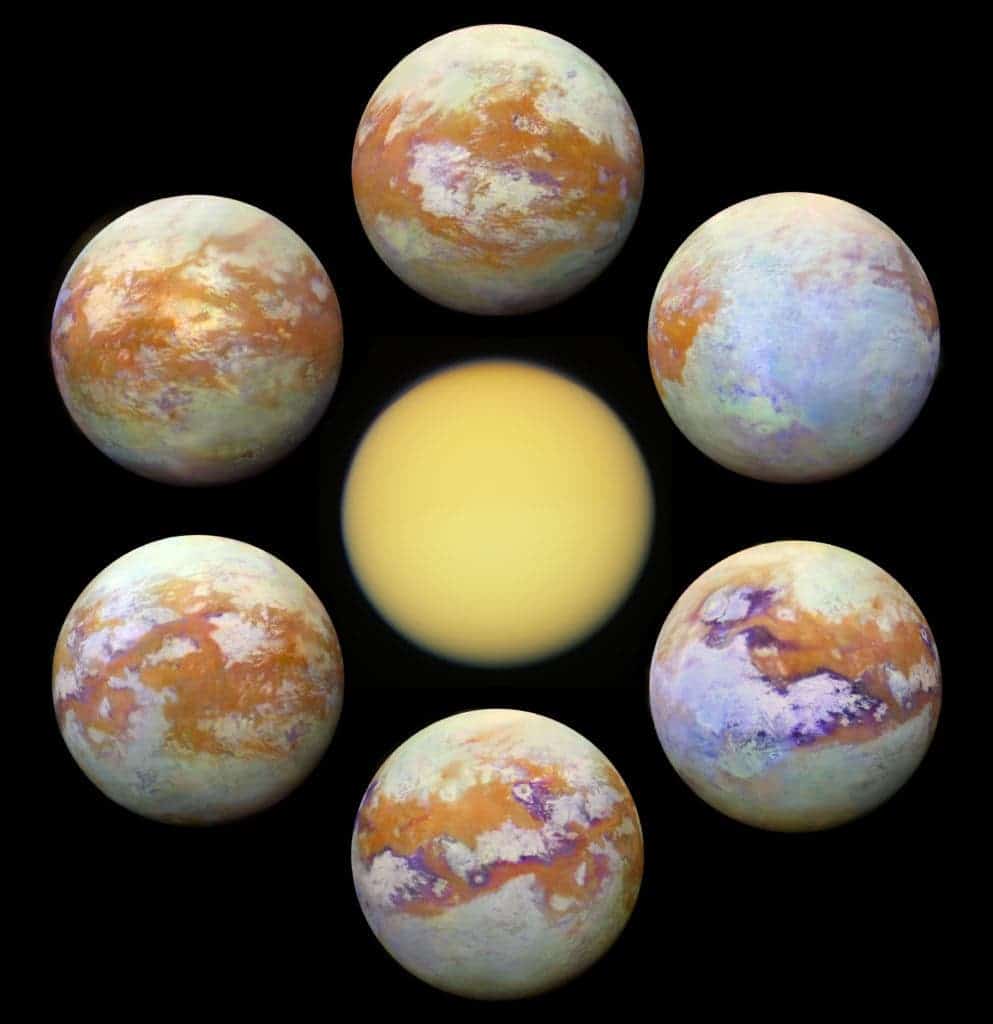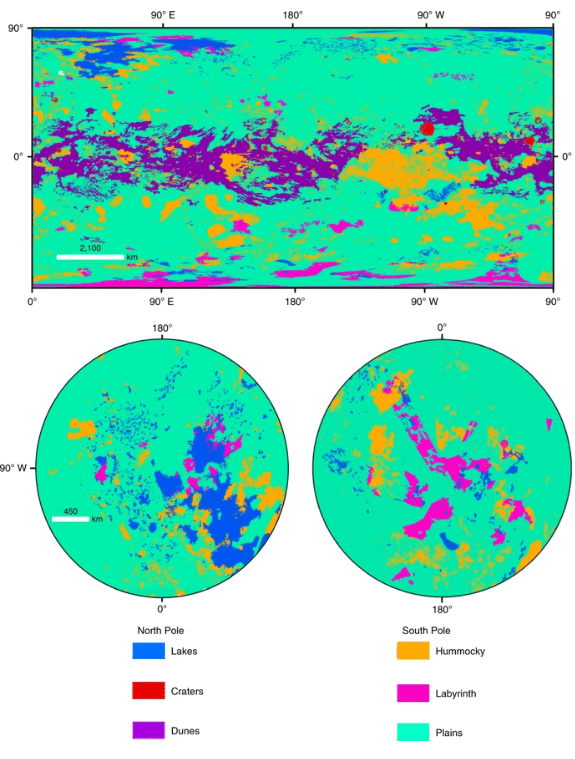
Titan’s atmosphere is dense and hazy, just like Earth’s. The satellite also features intricate, stable bodies of liquid on its surface. But that’s where the similarities with the Earth end. Titan’s liquid isn’t water, but hydrocarbon (mostly methane). It’s atmosphere — 97% nitrogen, the rest methane and hydrogen.
Titan’s remarkable features make it extremely interesting for astronomers and geologists alike. It may not have water or oxygen, but aside from Earth, Titan is still the only body in the solar system to have an atmosphere and hydrologic system, which has a significant impact on its surface and evolution. However, its hazy atmosphere hinders our view of the surface, and it has been difficult to obtain a global vision of Titan’s geology.
Even after Titan was examined by both Voyager 1 and 2 in 1980 and 1981, respectively, it remained a mysterious object — a large satellite shrouded in an atmosphere too thick to enable observation.
All that changed with the Cassini mission. Armed with state of the art technology and perfectly equipped to deal with the planet’s rough conditions, Cassini revealed Titan in unprecedented detail.
Rosaly Lopes from NASA’s Jet Propulsion Laboratory and colleagues used data gathered with infrared and radar instruments aboard Cassini to reconstruct and map Titan’s surface, including its poles. They identified six major geological forms, describing their approximate age and distribution around the globe. While Titan’s geology has been mapped before, this is the most comprehensive map of its kind.

Titan’s geology depends strongly on latitude. Most of the satellite is covered by featured organic plains, which are widespread at mid-latitudes. But around the equator, young dune fields and hydrocarbon lakes dominate the landscape. These dunes, most of which measure 80-130 meters high, are the second-most extensive unit on Titan. Another important feature is the hummocky landscape — rocky mounds that are exposed as isolated peaks or ranges, gently undulating from mid to high latitudes, generally aligned east-west. These structures may have formed through tectonic activity, early in Titan’s history.
Titan also features lakes and seas, either dry or liquid-filled. The polar regions alone contain over 650 lakes, the majority being in the northern polar region.
Titan isn’t a static environment. Its surface has been changed by several geological processes, including impact cratering, precipitation, tectonism, as well as erosion. Given its hydrocarbon-rich surface, Titan is also riddled in organic material. This material is constantly eroded, shifted, deposited, and transported. All these interactions make Titan’s geology much more difficult to understand — which is why a geological map comes in handy.
These observations demonstrate the extent to which Titan is shaped by its methane cycle — just like the Earth is shaped by the water cycle. The polar areas are humid enough to keep liquid bodies of methane, whereas the arid equatorial climate keeps wind-shaped dunes intact.



